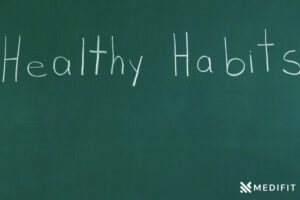Health at Every Size (HAES) is a paradigm shift that challenges the traditional approach to health, which often emphasizes weight loss as the primary marker of health. By contrast, HAES promotes a weight-inclusive approach to health, which recognizes that people of all sizes can pursue health and wellness. This article aims to explore the HAES philosophy and its importance in promoting body positivity and combating weight stigma.
In recent years, the body positivity movement has gained momentum, with more people embracing the idea that all bodies are worthy of respect and care. However, even as this movement has grown, weight stigma remains a pervasive problem in society. People in larger bodies often face discrimination, bias, and negative health outcomes as a result of weight stigma.
The HAES approach seeks to address this problem by promoting a weight-inclusive and evidence-based approach to health. This approach recognizes that health is complex and multidimensional, and that body weight is only one factor among many that can influence health outcomes.
The Purpose of This Article
The purpose of this article is to provide an in-depth exploration of the HAES philosophy and its significance in promoting body positivity and combating weight stigma. We will explore the scientific evidence supporting the HAES approach, as well as common misconceptions and criticisms of this approach. We will also discuss the middle ground approach towards health.
Overview of Topics Covered
In this article, we will cover the following topics:
1. The limitations of the traditional approach to health and the need for a weight-inclusive approach.
2. The five principles of the HAES approach and how they promote health and well-being.
3. The scientific evidence supporting the HAES approach, including its effectiveness in managing chronic health conditions.
4. Common misconceptions and criticisms of the HAES approach and how to address them.
5. The criticism against Health at Every Size
6. The balanced approach towards better health
By exploring these topics in depth, we hope to provide a comprehensive understanding of the HAES philosophy and its importance in promoting health, wellness, and body positivity for all.
The Problem with the Body Mass Index (BMI)
The Body Mass Index (BMI) is a widely used metric for assessing body weight and health. It is calculated by dividing a person’s weight in kilograms by their height in meters squared. The resulting number is then used to categorize individuals into different weight categories, such as underweight, normal weight, overweight, and obese.
Despite its widespread use, the BMI has several limitations that make it an imperfect measure of health. One major limitation of the BMI is that it does not distinguish between fat and muscle mass. This means that someone who is muscular or has a high proportion of lean body mass may be classified as overweight or obese, even if they have a low body fat percentage and are metabolically healthy.
Furthermore, the BMI formula itself has been criticized for being too simplistic and not taking into account other factors that can influence health, such as age, gender, and ethnicity. For example, research has shown that the BMI may underestimate the risk of cardiovascular disease in older adults and overestimate it in younger adults.
In addition to its limitations as a measure of health, the BMI has also been used to perpetuate weight bias and promote weight loss as the sole solution for health. The BMI has been used as a tool for weight discrimination, with individuals in larger bodies being stigmatized and discriminated against in various settings, such as healthcare, education, and employment.
Moreover, the BMI has been used to justify weight loss interventions, such as diets and bariatric surgery, as the only way to achieve optimal health. This narrow focus on weight loss ignores the complex interplay between genetics, environment, and behavior that can influence health outcomes.
In light of these limitations and biases, it is important to recognize that the BMI is only one measure of health and should not be used in isolation to make decisions about individual health. A weight-inclusive approach, such as the HAES approach, recognizes that health is multifaceted and can be achieved at every size. By focusing on holistic health behaviors, such as intuitive eating, joyful movement, and stress reduction, individuals can pursue health and well-being in a way that honors their unique bodies and experiences.
Health at Every Size (HAES) Principles
Health at Every Size (HAES) is a paradigm shift in the way we think about health and weight. HAES is an approach to health that prioritizes holistic health behaviors, rather than weight loss, as the foundation for well-being. The five principles of HAES include:
1. Weight inclusivity: HAES recognizes that body diversity is natural and that health can be achieved at every size. HAES advocates for respect and acceptance of all body sizes and shapes.
2. Health enhancement: HAES encourages individuals to engage in behaviors that enhance their overall health and well-being, such as eating a balanced diet, engaging in regular physical activity, and reducing stress.
3. Respectful care: HAES promotes compassionate and non-judgmental care that acknowledges the impact of weight stigma on health outcomes. HAES advocates for weight-inclusive care that prioritizes health outcomes over weight loss.
4. Eating for well-being: HAES encourages individuals to eat in a way that nourishes their bodies and promotes overall health and well-being. This includes intuitive eating, which involves listening to one’s body’s signals of hunger and fullness and respecting one’s preferences and needs.
5. Life-enhancing movement: HAES encourages individuals to engage in physical activity that promotes enjoyment and enhances overall health and well-being. This includes finding joyful movement that is sustainable and enjoyable for each individual.
HAES differs from the traditional weight loss approach in that it does not focus on weight loss as the sole solution for health. Instead, it prioritizes holistic health behaviors that enhance overall well-being, regardless of body size. HAES recognizes that health is complex and influenced by a variety of factors, including genetics, environment, and behavior.
The Science of HAES
The Health at Every Size (HAES) approach is supported by a growing body of research that demonstrates its positive impact on health outcomes. Studies have shown that engaging in health-promoting behaviors, such as physical activity and healthy eating, regardless of weight status, can lead to improvements in blood pressure, cholesterol levels, and diabetes management.
One study published in the Journal of Obesity found that a HAES intervention led to improvements in psychological well-being and healthy behaviors, including physical activity and improved dietary choices, without promoting weight loss. Another study published in the Journal of Nutrition Education and Behavior found that a HAES approach led to significant improvements in body satisfaction and reduced disordered eating behaviors in young adults.
Taking a weight-neutral approach to health has many benefits. By focusing on health-promoting behaviors rather than weight loss, individuals are able to engage in sustainable behaviors that enhance their overall well-being, rather than participating in harmful and unsustainable dieting practices. This approach has been shown to lead to improved mental health outcomes, such as reduced anxiety and depression, as well as improved self-esteem and body satisfaction.
Critiques of the HAES approach often rely on flawed research that fails to account for the complex nature of health and weight. Many studies that have been used to refute HAES principles have relied on small sample sizes or short-term interventions that do not accurately reflect the long-term impact of health-promoting behaviors. Additionally, these studies often fail to consider the impact of weight stigma and discrimination on health outcomes, which is a key component of the HAES approach.
Overall, the science of HAES supports a weight-neutral approach to health that prioritizes holistic health behaviors and acknowledges the complex nature of health and weight. By focusing on health-promoting behaviors and promoting body acceptance and respect, individuals can pursue health and well-being in a way that honors their unique bodies and experiences.
Arguments Against Health at Every Size
It is important to acknowledge that there are some arguments against the Health at Every Size (HAES) approach. While the HAES approach has been shown to be effective in promoting health and well-being in individuals of all sizes, some critics argue that it is not a viable solution for everyone.
Normalisation of Obesity and Health Risks
One of the main arguments against HAES is that it promotes a “normalization” of obesity, which some argue is not a healthy or sustainable approach to health. Critics argue that obesity is associated with a range of health risks, including increased risk of heart disease, diabetes, retain cancers and other chronic conditions, and that the promotion of body acceptance for all body sizes may discourage individuals from taking steps to manage their weight and reduce these risks.
Difficult Implementation
Another argument against HAES is that it may be more difficult to implement in practice than traditional weight loss approaches. Critics argue that promoting healthy behaviors without focusing on weight loss may be less motivating for some individuals, and that there may be a lack of evidence-based strategies for implementing the HAES approach in clinical settings.
Stigma
Some critics argue that HAES is not a realistic approach for individuals who are discriminated against because of their weight. They argue that individuals with obesity may face prejudice and discrimination, leading to poorer health outcomes. By promoting acceptance of larger body sizes, HAES may be inadvertently perpetuating stigma against individuals who are not within the “normal” weight range.
Lack of Evidence
Some critics argue that there is not enough evidence to support the effectiveness of HAES. They argue that traditional weight loss approaches have a stronger evidence base and that promoting weight loss should remain the focus of health interventions.
So, What is the Right Approach Towards Better Health?
A middle ground approach towards better health involves recognizing that there is no one-size-fits-all solution and that different approaches may work better for different people. While embracing the principles of Health at Every Size (HAES) can be a beneficial approach towards promoting holistic health and well-being, it may not be the right approach for everyone.
Some individuals may find that weight loss is necessary to improve their health, particularly if they have weight-related health conditions such as diabetes or high blood pressure. In such cases, a weight-neutral approach may not be effective in addressing their health needs.
However, even when weight loss is necessary, it is still important to prioritize a compassionate and non-judgmental approach towards health and well-being, rather than focusing solely on weight loss or body size. This involves recognizing that weight stigma and body shaming can have negative effects on mental and physical health, and avoiding harmful dieting behaviors or excessive exercise regimens that may do more harm than good.
Instead, a middle ground approach involves prioritizing individual health and well-being, while also recognizing and challenging harmful cultural messages about weight and beauty. This can involve adopting healthy habits such as eating a balanced diet, engaging in regular physical activity, getting enough sleep, managing stress, and avoiding harmful behaviors such as smoking or excessive drinking.
It also involves being mindful that weight is just one aspect of health and well-being, and that factors such as mental health, social support, and access to healthcare and other resources are also important. Therefore, a middle ground approach involves addressing these factors as well, and recognizing that improving health is a complex and ongoing process that requires patience, self-compassion, and a willingness to seek support when needed.
Also read Body Positivity vs. Body Acceptance: What’s the Difference and Why Does it Matter?
https://education.nationalgeographic.org/resource/health-every-size/


























Recent Comments